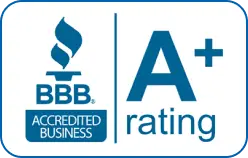A wait-and-see buy-sell agreement is a hybrid agreement implemented by the owners of a business to facilitate the orderly transition of a business interest in the event of the death, disability, or retirement of an owner.
With a wait-and-see plan, the business owners delay the selection of an entity plan or cross-purchase buy-sell plan until the actual death, disability or retirement of an owner. If one of these events occurs, both the company and the business owners agree to purchase the remaining business interest at a pre-determined priced based on the company valuation set forth in the agreement.
In short, the company has the initial option to purchase the available business interest. A second option to purchase any remaining interest then goes to the business owners themselves. Any remaining business interest must then be purchased by the company.
How Does a Wait-And-See Buy-Sell Agreement Work?
Wait-and-see buy-sell plans customarily use life insurance as a funding method due to its flexibility and efficiency. In a wait-and-see plan, each business owner purchases a life insurance policy on the life of each of the other business owners in an amount equal to his percentage of each business owner’s interest.
If a business owner dies, the remaining owners receive the proceeds of the insurance policy on the life of the deceased partner.
At this point, the company has the option to purchase any business interest from the deceased owner’s estate (an entity plan).
- Any remaining business interest can be purchased by the surviving owners based on their percentage of ownership interest set forth in the agreement (cross-purchase plan).
- Any shares not redeemed by the owners must be purchased by the company.
In most cases, each surviving business owner contributes the proceeds received from the life insurance to fund the corporate redemption. The deceased owner’s estate receives instant liquidity at a fair market value for their business interest.
trusted by 5,000+ clients
Get Personalized Quotes Tailored to Your Company’s Needs
The Main Advantages of a Wait-and-See Agreement
A properly drafted business buy-sell agreement funded with life insurance will have the following advantages:
- Creates all the advantages of a cross-purchase buy-sell agreement.
- Company ownership may be structured in equal terms or any other desired proportion based on the terms of the agreement.
- Creates an instant market for the business at a pre-arranged fair market value.
- May establish a usable fair market value for the business for estate tax purposes.
- There is a “step up” in basis. Through either approach the remaining owners cost basis for their respective business interests is increased.
- Provides liquidity for the deceased owner’s estate.
Of course, there can be disadvantages, as well, depending on your business and it’s long term goals.
Slight Disadvantages of Wait-and-See Policies
The disadvantages of wait-and-see buy-sell agreements include:
- Life insurance policies are not owned by the business so any cash values cannot be considered company assets.
- Depending on the varying ages of the business owner’s actual premium payments may vary greatly.
- Requires more policies that a stock redemption plan therefore is more difficult to administer. If more than 3 owners, the number of policies required may get excessive. For example, if there are 6 business owners, 30 policies will be required.
- May be difficult to come to agreement on and make effective.
- Policy cash values are subject to the personal creditors of the business owner.
Wait-and-See Buy-Sell Agreements and Taxes¹
Tax issues with wait-and-see plans include:
- Life insurance policy premiums are not tax deductible.
- Death benefit proceeds received by the business owners are generally received income tax free.
- If the business is properly valued, the value defined in the buy-sell may likely be binding when calculating the estate tax value for income and estate tax purposes.
- Once a deceased owner’s shares are purchased, the remaining owner’s receive an increase in their cost basis for tax purposes.
All things considered, a wait-and-see buy-sell agreement funded with life insurance will assure an efficient transition for your business.
Without an established funded plan, in the event of a business owner’s death, your business may experience major problems dealing with deceased family members, IRS issues and potential litigation.
Don’t wait till it is too late to plan! Call MEG Financial today at (877) 583-3955 to discuss your business continuation concerns. A licensed insurance agent can personally review your circumstances and help you uncover potential options for your business.
¹ Neither MEG Financial nor any of its licensed agents provide legal or tax advice. For appropriate guidance, please consult your attorney, CPA or tax advisor for legal or tax questions relating to your specific circumstances.














